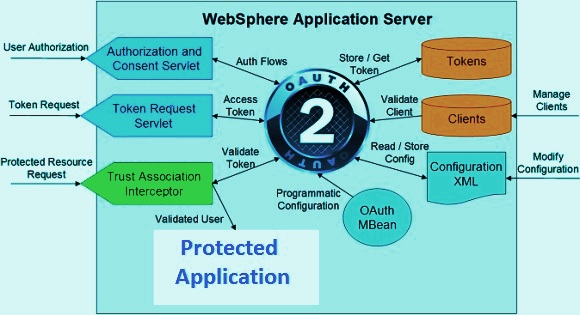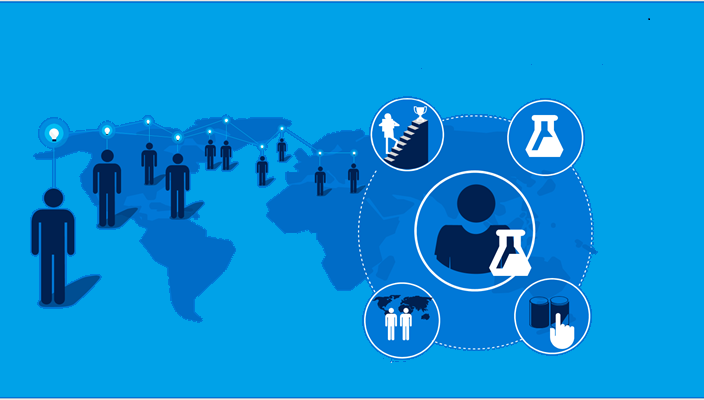


WebSphere Application Server is a software product which helps to perform the role of a web application server. WebSphere is a flagship product and a set of Java-based tools by IBM which allows customers to create and manage sophisticated business Web sites. It was originally created by Donald F. Ferguson, who later became CTO of Software for Dell and the first version was launched in 1998.
While the central WebSphere tool is known as WebSphere Application Server (WAS). WAS is an application server that helps the customer to connect Web site users with Servlets or Java applications. A Servlet is a Java program that runs on the server rather than on the user's application as Java applets do. Servlets are developed to replace the traditional common gateway interface (CGI) scripts. These scripts are usually written in C language, Practical Extraction or Reporting Language to run much faster and to control all other user requests that run in the same process space.
In addition to Java, WebSphere also supports the open standard interfaces such as Common Object Request Broker Architecture (CORBA) and Java Database Connectivity — JDBC. WebSphere is designed to use across different operating system platforms. You have an option of selecting the version suitable for your business purpose, as one edition of WebSphere will be offered for small to medium size businesses and another edition is for larger businesses with a huge number of transactions. It also has a Studio, which is a developer's environment added with additional components which allow creating web pages’ for a website and you can also the web pages accordingly. Both the versions support Solaris, Windows NT, OS/2, OS/390, and AIX operating systems.
While the WebSphere Studio includes a copy of the Apache Web server; which helps the developers to test Web pages and Java applications at any given time.
What is WebSphere?
The moment you ask this question, the first thing that strikes in your mind is WebSphere is an application server; but in reality, WebSphere is the name of the product in IBM family. IBM has many more products under the brand name WebSphere, here are some of them WebSphere Application Server, WebSphere MQ, WebSphere Message broker, WebSphere process Server, WebSphere business modeler, WebSphere business monitor, WebSphere integration developer, WebSphere partner gateway.
WebSphere Application Server Architecture
WAS is built using Open standards such as Java EE, XML, and Web Services. WebSphere application is supported on the following platforms; Linux, Windows, AIX, Solaris, IBM i and z/OS. It was started with Version 6.1 and the latest version is Version 8.5. While the open and standard specifications are aligned across all the platforms. Platform utilization is to an extent it takes place, but now it is done below across all open standard specifications line.
Security
The WebSphere Application Server security model is based on the services provided by the operating system and as per the Java EE security model. WebSphere Application Server provides implementations of user authentication and authorization mechanisms given that support for various user registries:
• Local operating system user registry
• LDAP user registry
• Federated user registry (version 6.1)
• Custom user registry
The authentication mechanisms supported by WebSphere are
...
Read More

The value proposition of Cloud computing — the delivery model for digitalization and innovation has evolved from cost reduction and scalability to mobility and cognitive computing. However, the other benefit is a path to improve customer loyalty using cognitive services through a cloud to create personalized promotions and interactive customer support.
This thinking has extended the idea of a cloud assessment beyond traditional and advanced IT analytics that aimed to improve the customer experience and expectations. The purpose of this customer-centric approach is not which cloud is the best fit for any application; instead, it should, which cloud is the most innovative in adding to hosting services.
The cloud suitability assessment in traditional approach is to evaluate the IT systems using prearranged criteria and to identify the best suitable cloud hosting environment. By implementing such environment you can evaluate cost reduction, agility, scalability, and flexibility. However, such assessments often result in creating a hybrid cloud (private and public) for enterprise-level customers.

While based on every organization’s IT need and policies, it is crucial to tailor assessment criteria which are typically included on latency (performance), accessibility, hardware dependency, data security/privacy and demand certainty. Thus, the end result is to migrate your application to the cloud, but that is not enough to be competitive in many markets today.
However, these assessments are like foundations to new analysis which aims to transform traditional IT systems into cloud-based systems to enhance the customer based services.
This new cloud assessment requires added evaluation criteria’s, such as cross-platform compatibility, integration involvedness, open technologies, and cognitive computing applicabilitys. These criteria’s can overlap with architectural design principles, and enable innovative services through IT systems running in the cloud.
Here are some questions that may help you to make out any gaps and achieve your innovative goals that go beyond legacy cloud migration.
This comprehensive assessment will make your systems or applications land in a cognitive ready cloud environment so you can speed up the design and implementation phase to innovative services.
The potential for these services is every time unlimited, so you need to consider the new insights made possible by cognitive computing. With the help of cognitive services process, you can see the tremendous amount of structured and unstructured data generated by billions of mobile devices every day.
It’s time to go beyond migrating your applications and systems into the cloud, and also look into its readiness for innovations how cloud and cognitive services could revolutionize your customer experiences. By doing so you could drive your digital transformation.
...
Read More